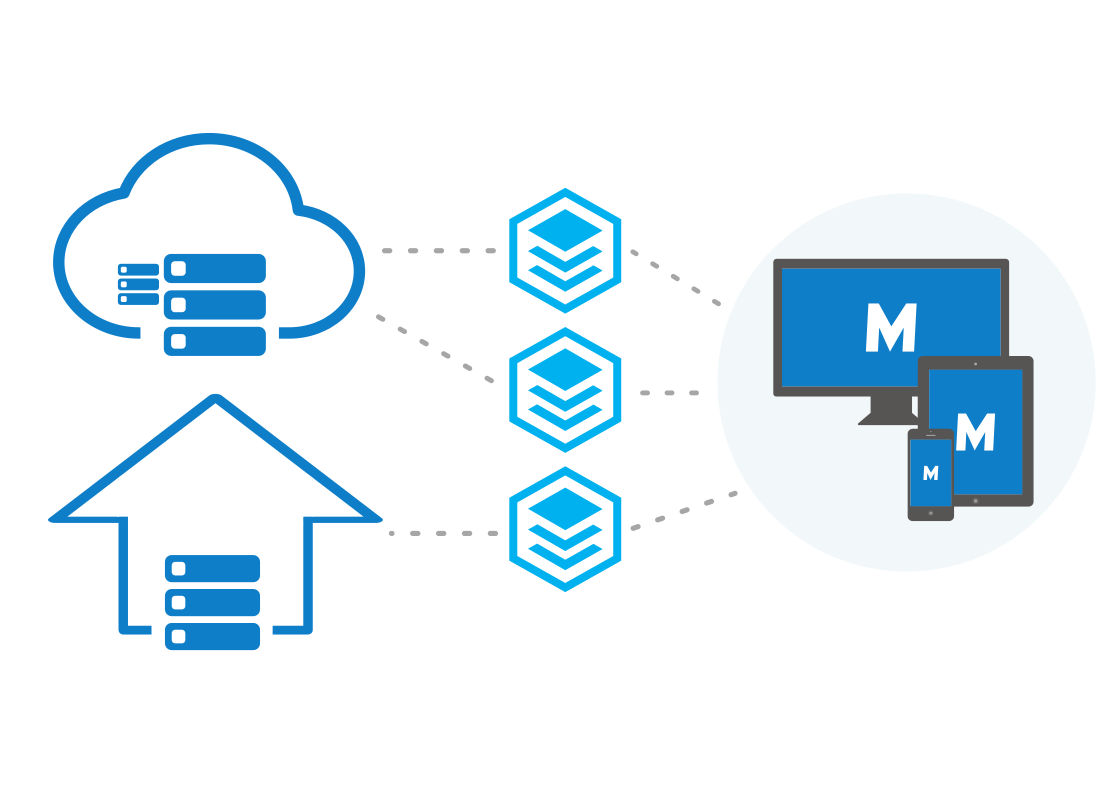M-Files Deployment Options
M-Files offers many deployment options that give you the flexibility to leverage M-Files based on the model that best suits your organization's business needs and budget. Below is a short description of each deployment option. Contact M-Files sales at [email protected] if you need more information and advice on finding the best solution for your organization.

You can access your vaults with M-Files Desktop, M-Files Web, and M-Files Mobile regardless of the deployment solution that you decide is best suited for your organization.
Cloud deployment
M-Files Cloud is a fully managed cloud environment for knowledge work automation. With M-Files Cloud, you can manage your content without investing in local server infrastructure and maintenance. M-Files Cloud uses industry-leading cloud services by Microsoft Azure that are designed for high availability, accessibility, reliability, and security.
M-Files Cloud services can easily be scaled up and down based on your business needs. Thanks to the flexible and transparent pricing model, you only pay for the number of user licenses and the amount of storage you need. End users can use the web browser, the desktop client, or the mobile app to view, edit, and share documents anytime, anywhere.
For more information, refer to M-Files Cloud - Service Description in the M-Files Support Portal. See also M-Files Cloud Requirements.
M-Files Manage
M-Files Manage is a web application for centralized user and license management of your M-Files subscription.
With M-Files Manage, you can do, for example, these operations:
- Add and remove users.
- Add and remove licenses.
- Change user information and license types.
- Control user access to vaults.
- Connect an identity provider, such as Microsoft Entra ID, to your subscription to import and synchronize user groups to M-Files.
- Manage license types for user groups gotten from your identity provider.
- Download M-Files installers.
For more information, refer to M-Files Manage User Guide.
On-premises deployment
An on-premises deployment is best suited for organizations that have already invested in IT infrastructure, or are required to use an on-premises solution deployed behind the organization's own firewall for regulatory reasons.
Using on-premises servers for M-Files vaults does not, however, mean that they could not be securely accessed from outside (or inside) the company network. The vaults in the organization's private network can be accessed with M-Files Web, M-Files mobile applications, or M-Files Desktop (with a VPN connection or a pre-shared key) in any location.
Self-managed cloud deployment
You can set up M-Files in a Windows Server virtual machine running on a cloud platform, such as Microsoft Azure, Amazon Web Services, or Google Cloud. These cloud deployments are self-managed in the same way as M-Files on-premises deployments.
The managed instance deployment option of Microsoft Azure SQL Database lets your organization set up a cloud-based environment to control the M-Files server and vault database engine. A managed instance of the Microsoft Azure SQL Database is a fully managed SQL Server Database Engine instance hosted in Azure cloud.
Hybrid deployment
With a hybrid solution, organizations can both leverage their existing on-premises technology investments and take advantage of M-Files Cloud – the award-winning knowledge work automation platform. It also eliminates the need for data migration and lets organizations keep legacy content where it is.
M-Files Cloud can be seamlessly integrated with on-premises ERP or CRM systems, such as SAP or Microsoft Dynamics GP and AX. Conversely, an on-premises deployment of M-Files can be easily integrated into existing cloud-based business applications, such as Salesforce, Microsoft Dynamics Online, or NetSuite.
The same client options (M-Files Desktop, M-Files Web, and M-Files mobile applications) are available also for hybrid deployments.